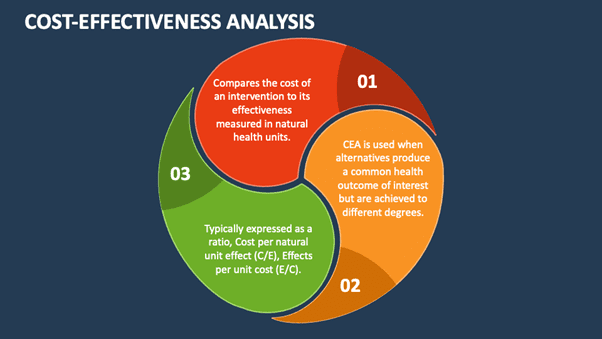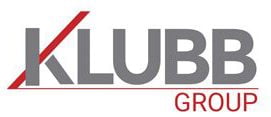Cost-effectiveness analysis also known as CEA or Cost-effectiveness is a type of economic analysis that seeks to evaluate the costs and the outcomes of different actions when the latter can not be measured easily.
Cost-effectiveness analysis is mainly used in the healthcare industry as cost evaluation of chirurgical intervention for example (cf :Christropher J.L Murray : Development of who guidelines on generalised cost-effectiveness analysis). Yet it is used in other fields such as the military, automotive industry or pharmaceutical industry.
CEA is presented as a ratio whose denominator represents a benefit (such as life extension for healthcare) and the numerator, the cost associated with this benefit.

Cost-effectiveness analysis is different from cost–benefit analysis, which assigns a monetary value to the measure of effect. Yet cost-effectiveness analysis is similar to cost-utility analysis because both assess the value of interventions based on their costs relative to their outcomes. However, CUA specifically measures outcomes in terms of utility, often using quality-adjusted life years (QALYs), allowing for a comparison of interventions across different areas of health by incorporating both the quality and quantity of life.
Cost-effectiveness analysis aims at maximizing the average outcome level. Distributional cost-effectiveness analysis builds on CEA’s core methods to include the distribution of outcomes alongside their average level. It also considers trade-offs between equity and efficiency. These advanced methods hold significant interest in interventions targeting health inequality.
Why is cost-effectiveness important ?
Cost-effectiveness analysis serves multiple purposes across the healthcare and policy-making spectrum. By identifying the most efficient allocation of resources, it enables decision-makers to prioritise interventions that offer the best outcomes relative to their costs.
When someone’s looking to buy or rent a cherry picker, thinking about cost-effectiveness is really about making sure they’re getting the most bang for their buck. It’s not just about the sticker price; it’s about considering how much it’s going to cost to keep the thing running, how much work you can get out of it, and whether it’ll still be worth something when you’re ready to sell it on. It’s all about making smart choices that won’t just save money upfront but will also keep costs down over time, making sure the investment pays off. Plus, for businesses, using a cherry picker that doesn’t break the bank helps keep the prices of their services competitive, which is always good for winning more work and growing the business.
How to measure Cost-Effectiveness ?
(cost-effectiveness formula / cost-effectiveness ratio)
Cost-Effectiveness Analysis (CEA) is really handy when it’s tough to do a regular cost-benefit analysis, mainly because it’s hard to put a price tag on the benefits. This happens a lot in healthcare, where you can’t easily say how much saving a life is worth in money, but you can count and compare things like how many lives are saved.
In CEA, you look at the money spent (££) and what you get out of it in non-money terms, like the number of lives saved or improved. Since you can’t directly compare these money and non-money outcomes, you don’t just add or subtract them to see if it’s worth it. Instead, you figure out the ratio of how much it costs versus how much good it does, which helps decide the best way to spend money.
To calculate the cost-effectiveness ratio (CER) for a cherry picker, you essentially compare the cost of acquiring and operating the cherry picker against the benefits it brings in terms of efficiency, productivity, or savings. The formula for the CER is:
CER ratio = Total Acquisition Cost / Effectiveness
Let’s say all acquisition costs add up to £50,000 over the cherry picker’s expected life and that the cherry picker allows for 1,000 hours of work to be completed more efficiently than the alternative.
Then the Cost-effectiveness formula would be calculated as follows:
CER ratio = £50,000 / 1,000 hours
CER ratio = £50 / hour
The formula to calculate the cost-effectiveness ratio (CER) for hiring a cherry picker remains the same. For example, if the total cost to hire the cherry picker is £2,000 for a project and it allows you to complete work equivalent to 100 hours of labor that would otherwise take longer by other means, the formula would be :
CER ratio = Total Rental Costs / Effectiveness
CER ratio = £2,000 / 100 hours
CER ratio = £20 / hour
Advice for choosing this method
Cost-Effectiveness Analysis (CEA) proves most beneficial at the initial stages of a program, providing a framework for comparing various paths of action. It’s advisable to integrate CEA both during the planning phase and the evaluation phase of a program. Additionally, CEA facilitates the construction of counterfactual scenarios, allowing for a comparison between the chosen program’s effectiveness and that of unselected alternatives, as well as comparisons with similar programs.
When deciding between Cost-Benefit Analysis (CBA) and CEA, the ease of quantifying benefits in monetary terms plays a pivotal role. Comprehensive cost-effectiveness studies consider a wide spectrum of costs and benefits, capturing both direct and indirect, as well as short-term and long-term impacts, ensuring the analysis aligns with the interests of all stakeholders impacted by the program.
Guidance for employing this methodology emphasizes the importance of selecting the correct metric for constructing the effectiveness ratio. Experimenting with different metrics may significantly influence the comparative rankings of the options and programs under review.
In executing a CBA, starting with a comprehensive inventory of all potential costs and benefits is essential, even if some items are subsequently omitted. This ensures no critical element of the analysis is neglected. Given the inherent uncertainties in predicting future costs, benefits, and risks, conducting a sensitivity analysis is indispensable. This analysis assesses the stability of the CBA outcomes against variations in key figures, safeguarding the reliability of the analysis.






